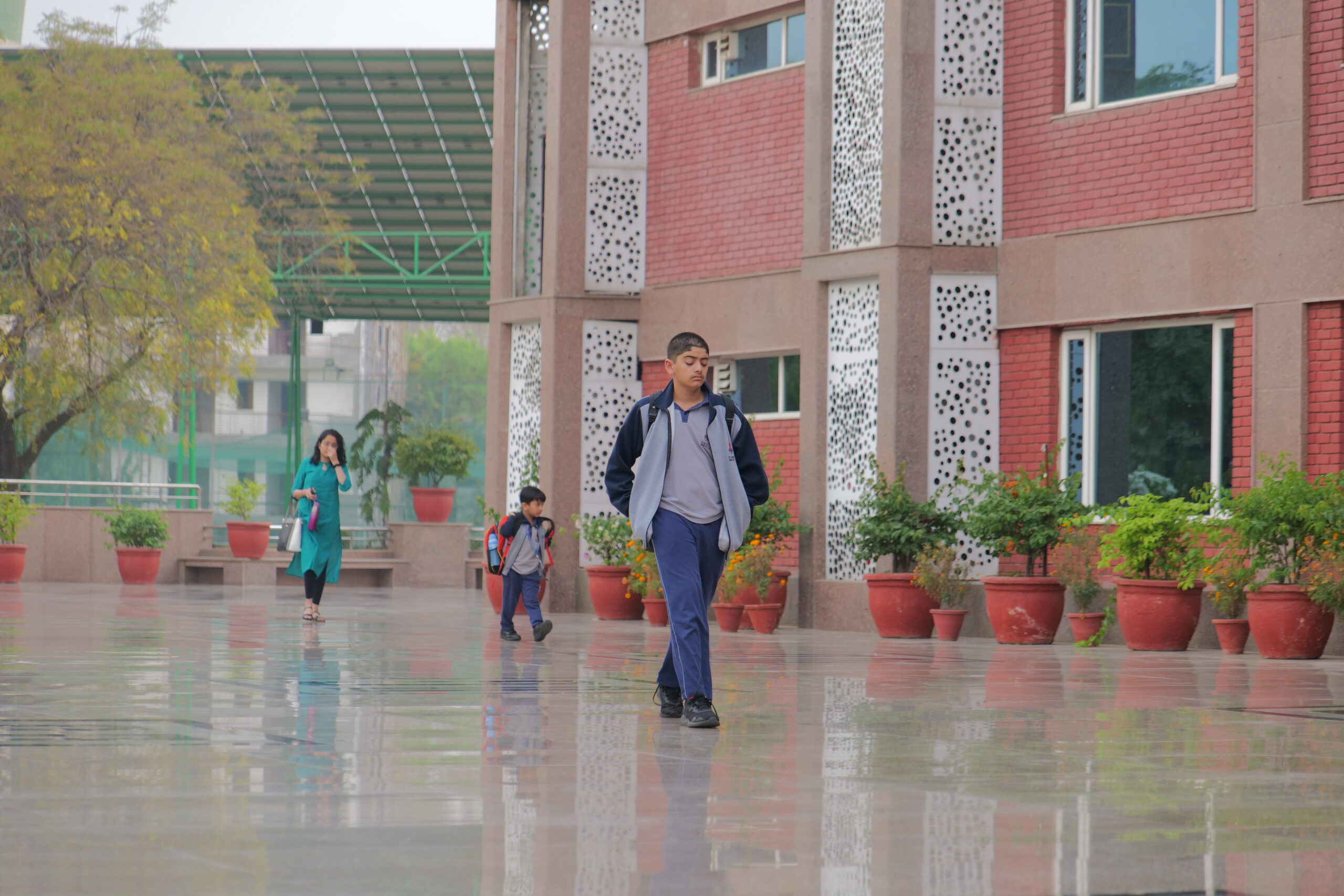Introduction:
In today’s competitive world, parents are no longer satisfied with schools that simply deliver academic excellence. At Excelsior American, the Good School in Gurgaon where they want institutions that nurture curiosity, confidence, creativity, and character—ensuring that children grow up as balanced individuals prepared for the challenges of the future. While high grades remain important, the modern family recognizes that true success lies in finding the right balance between classroom learning and co-curricular exposure.
This is where the school has carved a niche for itself. By offering a unique ecosystem that emphasizes academics alongside a vibrant mix of arts, sports, innovation, and leadership-building, the school reflects the standards observed in some of the Good Schools, yet it goes beyond by integrating these elements into daily learning.
Why Balance Matters in Education
Beyond Marks and Medals
Academics develop logical reasoning, subject expertise, and analytical skills, while activities provide creativity, teamwork, and adaptability. Without balance, students risk becoming either too narrow in their focus or spread too thin without depth.
Preparing for the Real World
In the real world, professionals succeed not just because of their technical expertise but also due to their communication, collaboration, and leadership skills. Schools that achieve balance prepare students for college, careers, and life beyond textbooks.
Mental and Emotional Well-being
Excessive focus on academics can lead to stress and burnout, while overindulgence in activities without structure can dilute academic growth. A balanced ecosystem ensures students enjoy learning and maintain a healthy mindset.
Lessons from School
Parents often benchmark institutions based on what the Schools are offering:
- Structured Curriculum Delivery: Ensuring rigorous academics remain the foundation.
- Holistic Development Programs: Offering arts, music, theatre, and sports as core parts of the timetable.
- Global Exposure: International pedagogy and global exchange opportunities.
- Infrastructure that Encourages Growth: From labs to playgrounds, world-class facilities nurture talent.
- Personalized Attention: Small class sizes and dedicated mentors help every child thrive.
It embodies all these qualities but distinguishes itself with its learning hub model, where academics and activities coexist without overshadowing each other.
Academics at the Core: Building Strong Foundations
At the heart of the framework lies a robust academic curriculum designed to build strong foundations across sciences, mathematics, humanities, and languages.
- Inquiry-Based Learning: Encouraging students to question, analyze, and discover.
- STEM Integration: Modern emphasis on robotics, AI, and coding.
- Exam Preparedness: Structured support for national and international competitive exams.
- Global Curriculum Choices: Offering international frameworks that open doors to Ivy League universities.
This academic foundation mirrors the rigor observed in the School, ensuring students remain competitive while also fostering a love for knowledge.
Activities that Complement Academics
1. Performing and Visual Arts
Art forms are not treated as side activities but as essential parts of student life. Music, dance, drama, and visual arts classes give students platforms to express creativity and build confidence. Regular exhibitions, performances, and inter-school competitions showcase their talent.
2. Sports and Fitness
From cricket fields to swimming pools, students have access to professional coaching and world-class facilities. The emphasis is on discipline, resilience, and teamwork—qualities that also enhance classroom performance.
3. Innovation and Technology
The school has dedicated labs for robotics, AI, and digital innovation. Students create prototypes, pitch entrepreneurial ideas, and even participate in hackathons. These experiences merge creativity with critical thinking, balancing theory with practical application.
4. Leadership and Life Skills
Debates, Model UNs, community service, and public speaking workshops help build confidence and empathy. By teaching time management, resilience, and collaboration, these activities prepare students for real-world challenges.
The Integrated Approach: Not Either/Or, But Both
The unique strength lies in how it integrates academics with activities. Instead of treating co-curriculars as “after-school clubs,” they are woven into the school day. For example:
- A history lesson may conclude with a drama activity where students reenact a historical event.
- Science projects often combine coding and robotics with classroom theory.
- Sports sessions are scheduled alongside academic classes to ensure physical and mental balance.
This seamless integration ensures students don’t feel the pressure of choosing between academics and activities—they thrive in both.
The Role of Teachers and Mentors
Teachers are trained to recognize each child’s strengths and guide them toward balance. Instead of pressuring students into academics alone, mentors encourage them to pursue passions while maintaining academic excellence. Personalized attention ensures no child is left behind.
In comparison, the Good Schools are known for their experienced faculty and structured mentorship programs. It builds upon this standard by ensuring teachers act not only as subject experts but also as life coaches.
Parents’ Perspective: Why Balance Is Non-Negotiable
1. Better University Prospects
Colleges worldwide now value well-rounded applicants. A child who excels academically while also showcasing achievements in sports, arts, or leadership stands out during admissions.
2. Future Employability
Employers today value problem-solvers, leaders, and team players. Students trained in both academics and co-curriculars naturally develop these skills.
3. Emotional Satisfaction
Parents recognize that children should enjoy their school years, not just endure them. A balanced education ensures joy, engagement, and lasting memories.
How Compares with Schools
Parents looking at the Good Schools often notice:
- Strong academic frameworks.
- Vibrant cultural festivals.
- Modern sports infrastructure.
It matches these standards but offers something extra—a structured ecosystem of hubs that equally prioritize academics, arts, sports, innovation, and leadership. This approach removes the imbalance that parents often fear in traditional schooling.
Steps Parents Can Take to Ensure Balance for Their Child
- Identify Strengths and Weaknesses: Observe where the child shines—academics, arts, or sports—and encourage participation in both.
- Set Realistic Expectations: Avoid pushing for only high marks or only activities. Growth comes from balance.
- Collaborate with Teachers: Regular interaction with faculty ensures parents are aligned with school goals.
- Encourage Exploration: Let children try multiple activities before specializing.
- Benchmark Against Standards: Study how schools recognized as good institutions achieve balance and see how the model fits your child’s needs.
Real Stories: Balance in Action
- A student preparing for competitive engineering exams while simultaneously excelling in football at state-level tournaments.
- Another who secured international recognition in arts while maintaining high academic scores.
- A group of students who built a sustainable project in the innovation hub while acing science Olympiads.
Such stories reflect the real-life application of philosophy—children don’t have to choose between being an academic achiever or a talented artist; they can be both.
Why Balance is the Future of Education
The 21st century demands versatility. With the world changing rapidly, children must learn to switch between skills, adapt to challenges, and innovate in uncertain situations. Schools that emphasize only academics risk producing students who are unprepared for these realities. Similarly, schools that over-prioritize activities may leave gaps in intellectual foundations.
Its balanced approach reflects the educational philosophy of some of the Good Schools but stands out by delivering a well-rounded model within a single cohesive ecosystem.
Conclusion:
Parents today seek schools where excellence in academics meets vibrancy in activities—where children learn to think critically, act creatively, and live confidently. At Excelsior American, the Good School in Gurgaon where the School delivers this promise by ensuring balance across every stage of learning.
By integrating academics with arts, sports, innovation, and life skills, the institution prepares children not just for exams but for life itself. In doing so, it mirrors the benchmarks of the schools while offering an even more personalized and child-centric model.
For parents making this crucial decision, the message is clear: balance is not just a preference—it is the foundation of future success. It ensures your child doesn’t just learn but thrives in every sense of the word.


